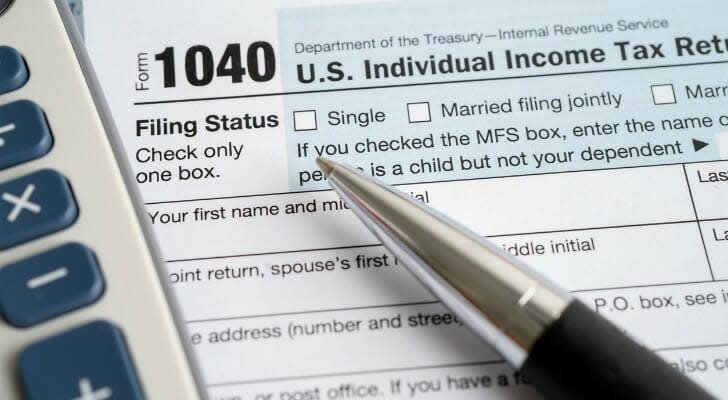
A House panel has passed a bill that would temporarily expand the standard tax deduction used by the majority of taxpayers by $2,000 per person for the next two years.
The Tax Cuts for Working Families Act (H.R.3936) recently approved by the tax-writing House Ways and Means Committee would temporarily boost the standard deduction by $2,000 for single filers and $4,000 for married filers for 2024 and 2025. The deduction would start to phase out for single taxpayers with $200,000 in income, or $400,000 for joint filers. A financial advisor can help you optimize your tax strategy and make sense of tax code changes.
“The vast, vast majority of my constituents use the standard deduction on their taxes every year,” said Rep. Carol Miller, R-West Virginia, adding that the measure will increase economic activity in local economies. “The bonus $4,000 deduction is a $100 billion tax cut for the working families and will go a long way to make sure that my constituents can make ends meet.”
Potential Impact of Standard Deduction Increase
Nearly two-thirds of households would get a tax cut in 2024 under the proposal, according to research from the nonpartisan Penn Wharton Budget Model. However, since the standard deduction lowers the amount of income subject to tax, the deduction isn’t refundable and wouldn’t provide cash to lower-income taxpayers. In fact, only a small percentage of the bottom 20% of households have enough income to get a tax cut under the proposal, the researchers from Penn concluded.
But those at the very top of the income ladder also wouldn’t see significant tax savings if the bill becomes law. Not only does the higher deduction phase out for incomes of $200,000 or more (or $400,000 for married couples), but a larger proportion of high-income households use itemized deductions.
“The poorest fifth of Americans would receive just 2% of the benefits of this provision, and on average, that means a tax break of just $30 next year,” said Rep. Richard Neal of Massachusetts, the committee’s ranking Democrat.
The change would also cost approximately $96 billion over 10 years, the Penn researchers found.
The standard deduction for 2023 will be $13,850 for singles and $27,700 for couples. The deduction nearly doubled as part of the 2017 Tax Cuts and Jobs Act, which expires in 2026. An increasing number of taxpayers have opted to claim the standard deduction, rather than itemize deductions for mortgage interest, charitable donations, medical costs and a host of other deductible expenses. According to the IRS, 90% of taxpayers opted for the standard deduction for their 2021 taxes.
Will it Help Ease Inflation or Make it Worse?
Sponsors of the temporary increase said the measure was intended to provide relief from inflation, which soared to 9.1% last June before dropping to 4% in May. The target inflation rate for the Federal Reserve is 2%, which mirrors the historical average.
That reasoning was criticized in an analysis by the conservative-leaning American Enterprise Institute, which pointed out that increasing the disposable income of so many Americans tends to make inflation worse, and would contradict efforts by the Federal Reserve to slow consumer spending by raising interest rates.
Bottom Line
An increase in the standard deduction on federal income tax would benefit most U.S. households but only a small amount of lower-income taxpayers would see any cut to their tax bills. Since the increase of the standard deduction in 2017, fewer taxpayers have been itemizing deductions on their returns.
Tax Optimization Tips
-
When it comes to saving and investing for retirement, taxes are a significant and complicated consideration. Saving in a traditional IRA or 401(k) gives you an immediate tax break since contributions are made on a pre-tax basis. A Roth account, on the other hand, is funded with after-tax dollars so your money grows tax-free. Here’s some additional guidance for late-career savers deciding whether to switch to Roth contributions.
-
A financial advisor with tax expertise can help you optimize your tax strategy. Finding a financial advisor doesn’t have to be hard. SmartAsset’s free tool matches you with up to three vetted financial advisors who serve your area, and you can have a free introductory call with your advisor matches to decide which one you feel is right for you. If you’re ready to find an advisor who can help you achieve your financial goals, get started now.
Photo credit: ©iStock.com/Hispanolistic, ©iStock.com/sasirin pamai, ©iStock.com/Moon Safari
The post Temporary Tax Plan Could Boost Your Standard Deduction By Up to $4,000 appeared first on SmartAsset Blog.
Source link







